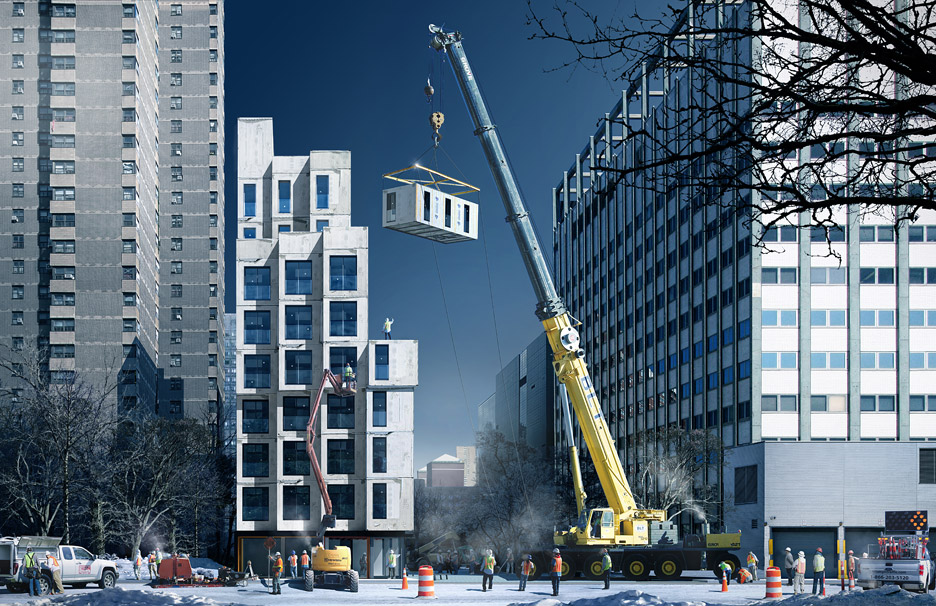SOME MUSINGS ON COST & FINANCING
BUILDING COST
[stextbox id=’alert’]Bear in mind this is all highly speculative – I’m just throwing out some ideas for discussion. Expert opinions/suggestions welcome.
Building costs vary widely depending on the country, location within the country, and the type and spec of the building. For the UK, which would be near the top of the international cost scale, a quick search pops-up a “Check-a-trade” estimate of £1800-3000 per m2 (2024) for “flats”. I am guessing that the lower rate is for “walk-up” flats and the higher rate for high-rise flats with lifts. Possibly these “building costs” do not includes land If we take the higher end of the range, as we must in the case of smaller apts – as kitchens and bathrooms cost more than bedrooms and lounge – a 50m2 apt would cost £150,000* to build. However, in a building containing many thousands of apartments, there should be room for considerable economies of scale. The pro-rata land cost component of each OA-City apartment would be that of a tiny plot of less than 20m2. Modular pre-fabricated “slot-in” construction would also be a lot cheaper than on-site construction.
(*The retail selling cost would be much higher – which explains why property developers get so rich).

O.A-cities offer the possibility of using voluntary labour of future residents – during construction they could live in onsite temporary accommodation and be paid in rent credits.
So, if our OA-city-to-be comprises 3,600 units of 50 sq m (average) – the build cost might be £300 million.
[stextbox id=’info’]Bear in mind this £300 million is ONLY the residential section, which might only account for around 25% of the total build. It does NOT include SHOPS, OFFICES, HOTELs, restaurants & cafes, clinic, school, library, theatre, other cultural and sporting facilities. And lets not forget 10 hectares of LANDSCAPING..! Or the UTILITIES infrastructure – water, power, waste management, etc – but as these generate their own income streams their financing will presumably come from other sources.
How much of that £300m could be borrowed from banks? Given the unusual nature of the project, banks might only be prepared to advance 75%, if that. If so, then 25% of the £300 million (£75m) will have to be stumped up by private and corporate investors. Or it could be financed through bond issues or other money-market methods – even possibly “crowd-funding”. If money-market sources are unavailable, the project will need either a single very wealthy investor (perhaps our erstwhile PRINCE) or a consortium of investors. Such a “founders group” would need to be comprised of fairly “like-minded” individuals who could agree on a provisional charter outlining the goals and philosophy of the projected community.
Once the initial “seed” money is pledged, the “founders” could issue a “prospectus” with the aim of attracting additional investors to buy shares in the co-op/project. This 2nd investor group might be invited to join the original “founders” group and, together, decide on the final draft of their city “charter”.
So now that the seed money has been raised, or at least pledged, for the residential part – what about the financing of the shops, offices, other workplaces, hotel, restaurants, cafes, etc?
Once building approval is gained plenty of institutional investors will want to to invest in the project and some big companies might even become shareholders in the residential side if they wish to locate some of their operations – a call centre for example – and take advantage of the lower wage structure. In order to do so they might want to reserve a section of apartments specifically for their employees.
At some point in this process, the land has to be bought or “optioned” (subject to planning approval). Assuming 20 hectares (50 acres) – 10 hectares for the building and another 10 for the “domain” – this is likely to cost from £5 million upwards to £20 million or more, depending on the location and on the likelihood of gaining planning permission. Either way, this should be relatively easy to finance as (once planning approval is given) the value of the land will shoot up. Of course, none of this will be easy especially in the nimby-nation of England – look at how many years it takes to approve an airport expansion, high-speed train, etc.
[stextbox id=’black’]Despite England’s enormously pressing need for OA-Cities – both public and politicians are so fearful of change they would seemingly “prefer” their cherished countryside covered with millions of matchbox houses, simply because that is the devil they know. As I have said before, I am not in the least optimistic that this will ever happen in the UK – or at least not until other countries have shown the way.
[stextbox id=”info”]“If bare agricultural land makes £10,000/acre and with detailed planning permission realises £500,000/acre, the ‘hope value’ (no planning permission but hoping to get it) ranges somewhere in between.” Developers are approaching farmers with “option agreements”, where they agree a price, but only buy if a planning application is successful. (Farmers Weekly)

